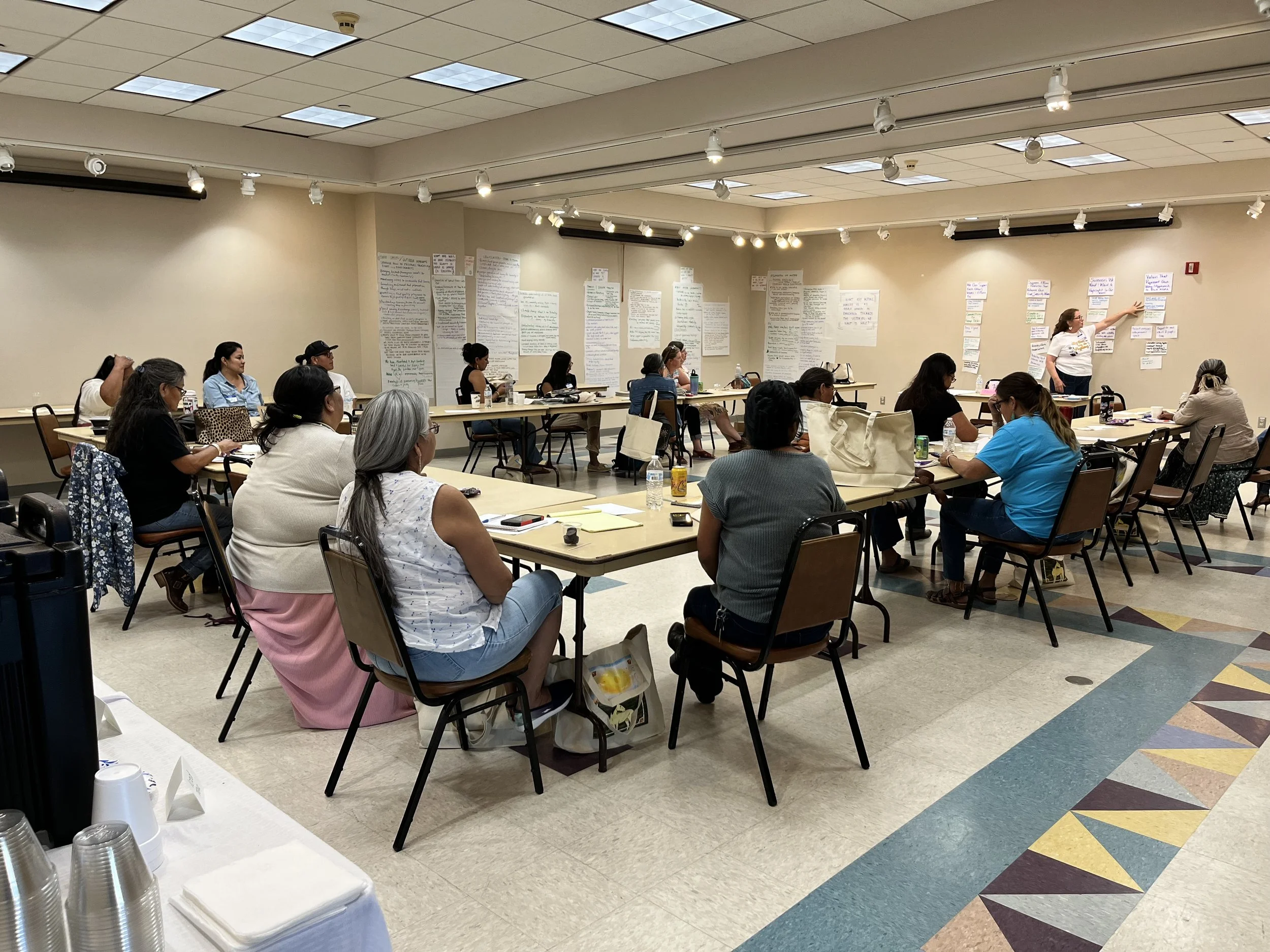
Event Recap
Before the Ground Blows Away
by Erin Thomas
August 15th, 2024
There are lots of ways to get to Tóta'. The way I usually go is over the Béésh Łichíí' Bigiizh. It's a quiet, pretty drive. As someone from the southwestern side of the rez, I’m always happy to be reminded that Diné Bikéyah has forests and mountains. I hope the mountains remember me. Maybe they say, “There goes Erin, probably headed to NAPI.” Not this time. I was on my own.
Once over the summit, I see the eastern side of the Navajo Nation. The landscape stretches beneath me inlaid with browns, pinks, whites and if you look hard enough, a little green. It's already the end of July. It's hot and dry. Climate change is pushing drought deeper into this rain shadow. I think about all the plants, animals and bugs that live outside. I think about how tough and patient it all is. I think about sheepherders, my grandma, my cheii. What would they think of the work I’m doing?
I’m driving to northeast New Mexico where there are so many sacred places and where we emerged into this current world, this reality. I hope my grandma would be proud that I recognize the sacred places that live in our songs and prayers. I hope she sees that I am learning where I come from.
I am driving to meet with a collective of Navajo Women who are brilliant and grounded leaders. These are the kind of women that can butcher sheep, weave rugs, herd sheep, run successful businesses, write grants, rope, ride and switch languages without missing a beat. These women make change.
I drive through NAPI and realize I’d never really been here in the summer. The fields are green and I start thinking about which pivot our cows will graze on this winter. I think about how resource intensive it all is as semis full of alfalfa roll by. This area is rich in resources: water, oil, uranium. Our stories live here, too. I follow the river to the air conditioned hotel room where I sit down and open my laptop.
Our dinner feels like when cousins and aunties get together. There’s an easy belonging sitting among women who understand the nuance and comedy of the Navajo experience. We know what it's like to grow up outside, to love our animals, the land and family. These women know the heartbreak of having to leave for school or work and come back to the enormity of what it will take to stay. In the warm summer night sitting with these women, I learn that it takes patience, grit and a lot of laughter.
We meet the next morning next to Są́ Bitooh at the Farmington Museum. We’ve all spent plenty of time at conferences and meetings, but this one is different. We meld into place, knowing what work is ahead of us. I could tell you exactly why each woman was invited to this room, but collectively, this is a group of fiercely honest and protective leaders. When we talk about land, it is about the soil that is shifting under our feet, but it is also politics, language, economics, governance, science, education, relationships, ceremony. It is in these spaces, and in these conversations, that I remember that we cannot separate ourselves from the land.
I’m back at home now, laptop open, beautiful view of nihikéyah. I often find myself mulling over the threat of desertification and the relentless urgency of drought. I come to the same conclusion about these anxieties: Navajo women won’t let their people go hungry. We won’t let the ground turn to sand and blow away. We understand and appreciate the immense responsibility we have for the land, for ourselves and for each other.
We never talk about being ‘rooted in the land’ but our Action Plan can tell that story.








